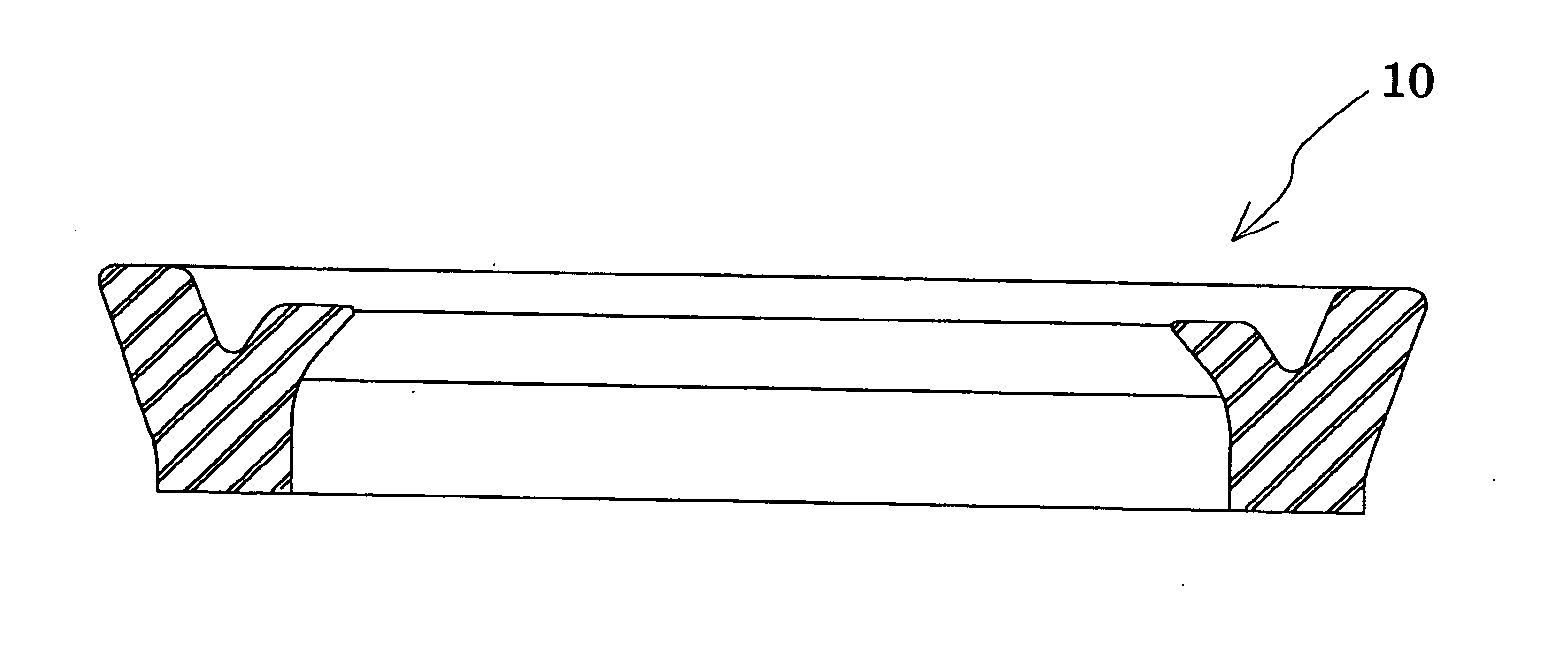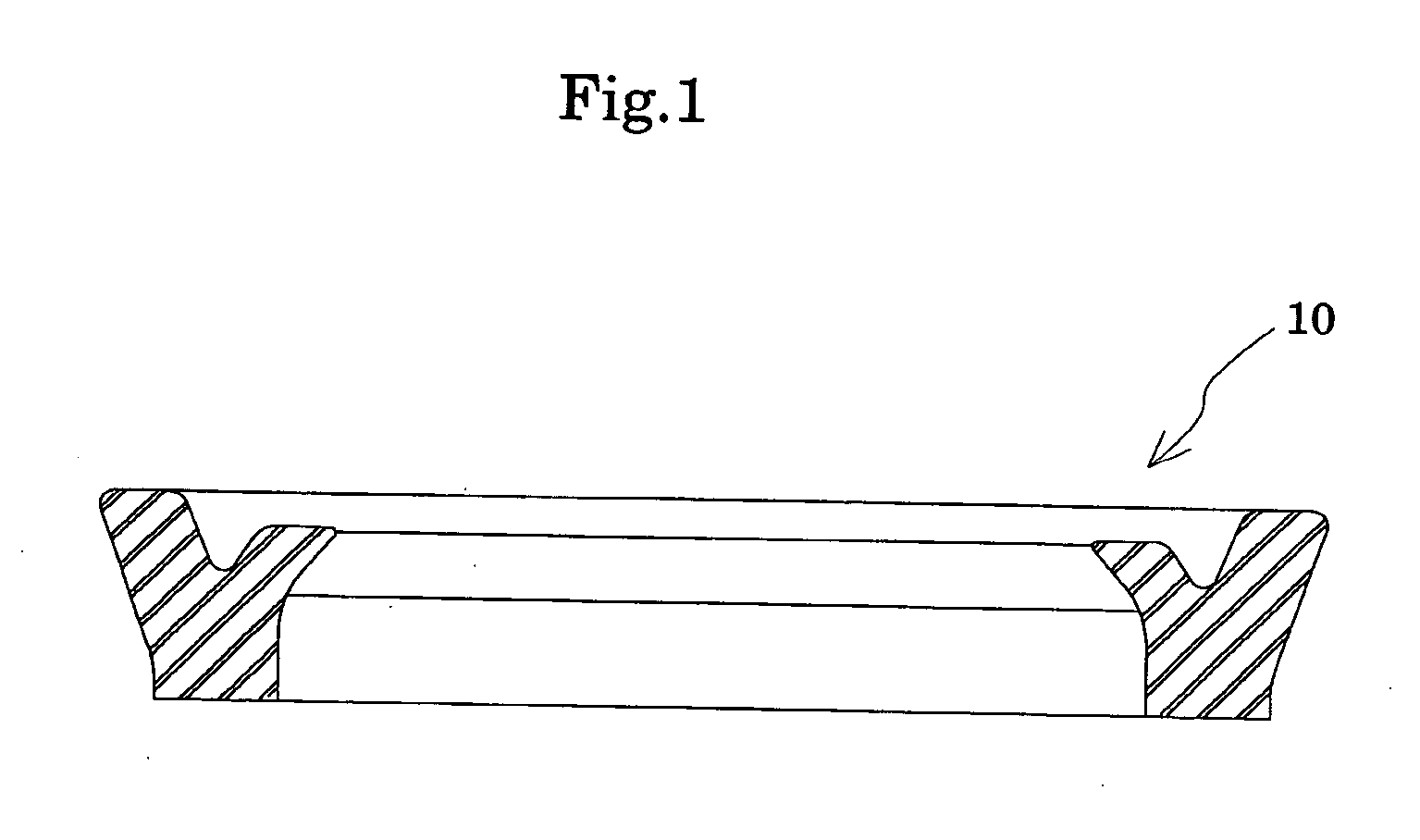Method for producing oil-resistant elastomer and oil-resistant seal member
- Summary
- Abstract
- Description
- Claims
- Application Information
AI Technical Summary
Benefits of technology
Problems solved by technology
Method used
Image
Examples
example 1
[0038]ε-Caprolactone and 1,4-butylene glycol serving as a starting diol were subjected to an addition reaction, to thereby yield a polyester diol having a hydroxyl value of 110. The polyester diol and MDI were subjected to polyaddition such that the amount of hydroxyl groups and that of isocyanate are adjusted to be equimol, to thereby yield a polyurethane rubber. The thus-formed polyurethane rubber had an ester group concentration of 28% and a urethane group concentration of 9.3%.
[0039] Dicumyl peroxide (Percumyl D, product of Nippon Oil & Fats Co., Ltd.) (2 parts by weight) was added to the obtained polyurethane rubber (100 parts by weight), and the resultant mixture was press-formed at 160° C. for 20 minutes, to thereby yield an elastomer.
example 2
[0049] To the polyurethane rubber (100 parts by weight) which had been obtained in Example 1, carbon black (Seast SO, product of Tokai Carbon Co., Ltd.) (20 parts by weight), an age resister (Stabaxol P, product of Sumitomo Bayer Urethane Co., Ltd) (1.5 parts by weight), and a cross-linking agent (Percumyl D, product of Nippon Oil & Fats Co., Ltd.) (2 parts by weight) were added, and the resultant mixture was press-formed at 1 60° C. for 20 minutes, to thereby yield an elastomer sample.
example 3
[0055] Adipic acid and 1,4-butanediol linear glycol were subjected to polycondensation, to thereby yield a polyester diol having a hydroxyl value of 112. The polyester diol and MDI were subjected to polyaddition such that the amount of hydroxyl groups and that of isocyanate are adjusted to be equimol, to thereby yield a polyurethane rubber. The thus-formed polyurethane rubber had an ester group concentration of 32.0% and a urethane group concentration of 9.4%.
[0056] The urethane rubber and additives were mixed at the same compositional proportions as those employed in Example 1, to thereby yield a compound. A cross-linked elastomer was prepared from the compound.
PUM
| Property | Measurement | Unit |
|---|---|---|
| Fraction | aaaaa | aaaaa |
| Fraction | aaaaa | aaaaa |
| Angle | aaaaa | aaaaa |
Abstract
Description
Claims
Application Information
 Login to View More
Login to View More - R&D
- Intellectual Property
- Life Sciences
- Materials
- Tech Scout
- Unparalleled Data Quality
- Higher Quality Content
- 60% Fewer Hallucinations
Browse by: Latest US Patents, China's latest patents, Technical Efficacy Thesaurus, Application Domain, Technology Topic, Popular Technical Reports.
© 2025 PatSnap. All rights reserved.Legal|Privacy policy|Modern Slavery Act Transparency Statement|Sitemap|About US| Contact US: help@patsnap.com


